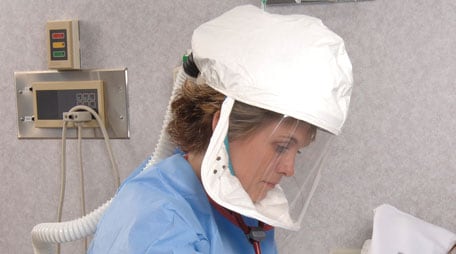At a glance
- Workers in the healthcare industry face some of the most challenging working conditions of any industry.
- Common risks include exposures to hazardous drugs, infectious diseases, high-stress levels, emotionally charged situations, and job burnout.
- Protect yourself and others by learning how to treat, minimize, or eliminate risks in your workplace.

Types of risk factors
Healthcare workers face extreme risks from challenging working conditions. Workers experience high stress levels that can lead to poor mental and physical health. These risks occur across a wide variety of healthcare related occupations, including personnel in public safety, emergency response, and many others.
The best way to protect yourself and others is by staying informed about the risks, treatments, and risk prevention practices. Use the information and resource links below to find out more about common healthcare risks and how you can stay safe.
Antineoplastic agents
Antineoplastic agents are cancer chemotherapy and cytotoxic drugs used in treating cancer and non-cancer patients that are present in healthcare settings. Exposure to the drugs can lead to long-term organ damage, fertility issues, and even cancer in healthcare workers. Find out more about protecting yourself and others from antineoplastic agents in healthcare settings by visiting the page linked below.
Infectious agents
Exposure to infectious organisms such as bacteria, fungi, viruses, and parasites is common in healthcare settings. Bloodborne pathogens are of primary concern due to the daily risk for needlesticks, mucous membrane, and skin exposures. Examples of bloodborne pathogens include human immunodeficiency virus (HIV), hepatitis B virus (HBV), and hepatitis C virus (HCV). Find out more about bloodborne pathogens.
Learn how to reduce your risk of exposure to bloodborne pathogens and other types of infectious agents. If an exposure occurs, learn how to proceed by visiting the page linked below.
Chemical hazards
Many hazardous chemicals are present in healthcare settings that pose risks to workers, patients, and others. These chemicals are critical for use in treating patients, fixing specimens, and for disinfecting surfaces, medical supplies, and instruments. Some of the more dangerous chemicals include aerosolized medications, anesthetic gases, and chemical sterilants or disinfectants. Learn about chemical hazard risks and understand your role in reducing exposures to them with information in the link below.
Work stress
High-stress levels and job burnout are common among healthcare workers due to the many risk factors they face on the job. Factors that can affect mental health include:
- Long working hours.
- Hazardous working environments.
- Physical demands.
- Daily exposure to human suffering and death.
- COVID-19 pandemic related challenges
Compounding these factors is a known stigma placed on those seeking treatment for mental health concerns. Discover what NIOSH is doing to reduce stress and burnout risk levels in healthcare workers by visiting the page linked below.
